
| Back To Meditation Home Page |

Custom Search
|
Are we Living in the Last Days...End Times? See Breaking News |
 |
| __________________________ |
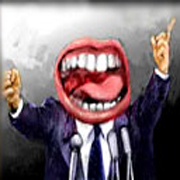 |
________________________ |
| ________________________ |
As You Study the Biblical Last Days in the News... Discover the Bible As Well |
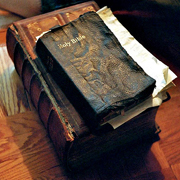 |
| ________________________ |
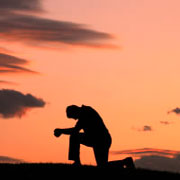 |
| ________________________ |
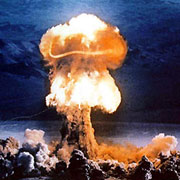 |
| ________________________ |
To Know God's Word Read Scripture |
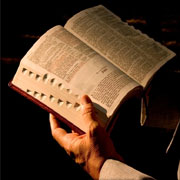 |
_______________________ |
To Read God's Word Your Reading Schedule |
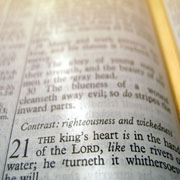 |
_______________________ |
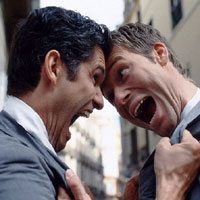 |
| _________________________ |
Thought Provoking Articles for Your Meditation |
 |
_______________________ |
|
From Egypt to Jerusalem |
|||||||||||||||||||||||||||||||||||||||
|---|---|---|---|---|---|---|---|---|---|---|---|---|---|---|---|---|---|---|---|---|---|---|---|---|---|---|---|---|---|---|---|---|---|---|---|---|---|---|---|
 |
|||||||||||||||||||||||||||||||||||||||
GOD gave the feasts of the LORD, found in Leviticus 23, so His people could understand the coming of the Messiah and the role that the Messiah would play in redeeming and restoring both man and the earth back to GOD following the fall of man in the Garden of Eden. Although most non-Jewish Bible believers have heard of the feasts, the deep meaning and the importance of these feasts are almost universally not understood. The apostle Paul wrote to the Gentile believers in Colossae that the feasts of the LORD, the new moon, and the Sabbath days were a shadow of things to come to teach us about the Messiah.
Jesus is the substance or fulfillment of the greater plan that GOD revealed and foreshadowed in these seven important festivals. The first feast of seven is Passover. GOD declared Passover to be a permanent celebration for all eternity.
In a Historical sense, Passover celebrates GOD's deliverance of the children of Israel from bondage in Egypt where they were slaves to the Egyptians. |
|||||||||||||||||||||||||||||||||||||||
 |
|||||||||||||||||||||||||||||||||||||||
The spiritual application is that Egypt is a type of the world and the world's system. Its ruler, Pharaoh, was a type of Satan. The bondage people are in when they live according to the ways of the world's system is sin. The Feast of Passover was given by GOD to be a rehearsal of the first coming of Jesus . The Passover ceremony was observed in remembrance of the past and in preparation for the future. Many years after the Passover in Egypt, a person named John the Baptist pointed to Jesus and declared that He was the Lamb of GOD.
After John, a type of Elijah, who would prepare the coming of Messiah, proclaimed Jesus as the Lamb of GOD, Jesus ministered for three-and-a-half years. At the end of that time, on the tenth of Nisan, Jesus rode into the city on a donkey, in fulfillment of Old Testament Prophecy.
Nisan 10 is now known as Palm Sunday in the non-Jewish community in our Gregorian calendar and corresponds to the month of March or April. See calendar comparison below: |
|||||||||||||||||||||||||||||||||||||||
|
|||||||||||||||||||||||||||||||||||||||
The lamb that was to be slain by the high priest was led into the temple and put in a prominent place of display for four days. Likewise, Jesus the Lamb of GOD went on public display when He entered the temple and spent four days there among the people, the Sadducees, the Pharisees, and the scribes, as the leaders asked Jesus their hardest questions. He was questioned in front of the people for four days, showing Himself to be without spot or blemish, fulfilling requirements described in Exodus.
There are those who believe that these four days that the Lamb of GOD was set aside is prophetic and illustrates that the Messiah would come 4,000 years from the creation of Adam as part of a 7,000 year plan of GOD to redeem both man and the earth back to how things were in the beginning in the Garden of Eden. A day is understood to be prophetic of a thousand years.
These four days are prophetic of Jesus being hid or set aside from the world and not coming to earth for four days or 4,000 years from the creation of Adam. While these types of eschatological beliefs are interesting, it is not known if they are an allegory created by GOD or not. The scriptures involved definitely are something on which to meditate, whether an allegory is present or not! To appreciate some interesting events related to Passover an understanding of the biblical day is necessary. The biblical day progresses from evening to evening, from sundown to sundown, which is roughly 6:00 p.m. to 6:00 p.m. The day (6:00 p.m. to 6:00 p.m.) is divided into two 12-hour periods. The evening runs from 6:00 p.m. to 6:00 a.m. The morning runs from 6:00 a.m. to 6:00 p.m. Each 12-hour period is divided into two smaller portions. From 6:00 a.m. to noon is the morning part of the day. From noon to 6:00 p.m. is the evening part of the day. The phrase, "between the evening" refers to the period of the day that goes from noon to 6:00 p.m., which is exactly 3:00 p.m. This would be the ninth hour of the day, counting from 6:00 a.m. On the fourteenth of Nisan, at the third hour of the day (9:00 a.m.), the high priest took the lamb and ascended the altar so he could tie the lamb in place on the altar. At the exactly the same time on that day, Jesus was nailed to the cross on Golgotha.
At the time of the evening sacrifice (3:00 p.m.) for Passover, the high priest ascended the altar, cut the throat of the lamb with a knife, and said the words, "It is finished." These are the exact words said after giving a peace offering to GOD. At this same time, Jesus died, saying these exact words.
As planned by GOD, Jesus died at exactly 3:00 p.m.
|
|||||||||||||||||||||||||||||||||||||||
 |
|||||||||||||||||||||||||||||||||||||||
In Exodus (see Exodus 12:8-9), we are told the lamb was to be roasted before sundown. According to Jewish tradition, the lamb was roasted on an upright pomegranate stick. This pomegranate stick is representative of the tree upon which Jesus died. The pomegranate is said to have 613 seeds within, the exact number of laws in the Torah. Thus Jesus would be "nailed" to the law, satisfying the penalty of breaking the law (all the laws), by His death. He, who knew no sin, took our sin, yours and mine and nailed it to the cross.paying the price for our sin. Fascinating symbology, or coincidence . you decide! The lamb was to be gutted, and its intestines were to be removed and put over its head. Thus, the lamb is referred to as the "crowned sacrifice." This is a graphic picture of Jesus on the cross with a crown of thorns on His head.
The night of the fifteenth of Nisan, GOD commanded the people in the book of Exodus to eat the lamb with unleavened bread and bitter herbs with their sandals on their feet and their bags packed and on their backs for on this night they are to leave Egypt. Likewise, we are to be quick to accept Jesus into our hearts and leave Egypt, which represents the sin and idolatry of this evil world. |
|||||||||||||||||||||||||||||||||||||||
 |
|||||||||||||||||||||||||||||||||||||||
The Seder can perhaps best be described as a "talk-feast." Conducted around a table laden with the bounty of the earth, it is people spending a leisurely evening engaged in good talk and good food. For the rabbis who formalized its procedures, Seder was the pre-eminent vehicle of cultural transmission from one generation to the next. Long before printed books and formal schools, the yearly Seder night transformed every Jewish home into a classroom, with the Haggadah (from the Hebrew root "to tell") as the text. The word "Seder" means order. From the Jewish perspective, the tradition understands the Passover table ritual as a fixed progression, 15 steps, a logical unfolding of the single most important Jewish lesson from the retelling of the single most significant Jewish experience. In actuality, the Passover Seder is one of the most carefully constructed learning experiences ever created. In an amazing combination of aural and tactile learning tasks, the Seder has something for everybody--drink, food, symbols, prayers, songs, stories, philosophy, text study, simulations, ritual actions--all designed with one overall goal: to take each person at the Seder back to Egypt, to re-enact the dramatic Exodus story, to make each one of us feel as she or he had actually been redeemed from Egypt. From a Christian perspective, the Passover Seder is all about Jesus, the Messiah. The allegorical ties between the lamb used for sacrifice and the Lamb of GOD offering Himself up for sacrifice are plain to see. One of the 15 steps during the Passover Seder is a step called Yachatz . Yachatz is when the middle of the three matzot is broken into two. During the Passover Seder, there is a bag called the matzatosh, covered by a linen cloth, which contains three pieces of matzot . The middle piece of matzot is removed, broken, wrapped in linen, and buried. This piece of matzah is the afikomen . During this part of the service, the afikomen was removed from sight (this represented Jesus being buried) and it remained hidden until later in the service. Jesus is the bread that was buried because He is the Bread of Life who came down from Heaven. |
|||||||||||||||||||||||||||||||||||||||
 |
|||||||||||||||||||||||||||||||||||||||
Jesus was removed from between the two thieves who were crucified with Him, wrapped in linen, and buried in the earth. Toward the end of the Passover Seder, the twelfth step to the service is called Tzafun . During Tzafun , the afikomen that was previously buried is redeemed and ransomed. At this point in the service, the matzah , previously characterized as the bread of affliction, is now transformed and redeemed. This is a perfect picture of Jesus , who fulfilled the role of the suffering Messiah. He suffered affliction while dying on the tree, but was later redeemed when GOD the Father resurrected him. In the Passover Seder service, the children redeem the afikomen . The children who find the buried (hidden) afikomen receive a gift. This gift is known as "the promise of the father" . Likewise, when GOD resurrected Jesus after He was buried in the earth, those who believed upon Him by faith are given gifts by GOD. When Jesus ascended to Heaven, He gave gifts to men.
These gifts included righteousness, eternal life, grace, faith, and other spiritual gifts. Some other gifts include wisdom, knowledge, healing, the working of miracles, prophecy, the discerning of spirits, tongues, and interpretation of tongues, helps and the gift of administration. Rabbis cannot agree on the significance of this unusual observance, or its origins. Some believe the three pieces of matzah in the matzahtosh represent three crowns of learning. Others believe it represents the three patriarchs: Abraham, Isaac, and Jacob. Still others believe it symbolizes the three types of people in Israel: the priests, the Levites, and the commoners. Yet through the eyes of the Gospels we see another explanation. Jewish and Gentile people who believe in Jesus have often seen in the afikomen a striking picture of the Trinity of GOD. In the three folds of the matzahtosh there is a picture of the Father, Son, and Holy Spirit. That the middle matzah-represented by the Son, our Messiah-is pierced, broken, wrapped in linen, hidden, and ransomed (the price paid), and then brought back for the family to accept and enjoy seems too deliberate to easily dismiss. While the symbolism of this ritual remains a mystery to those who have not accepted Jesus, through "saved" eyes the meaning is plain, clear and powerful. When Jesus said of the unleavened bread, "Take, eat; this is My body," He was not instituting an empty ritual. He was identifying Himself personally with both the matzah and the Passover lamb, bringing to mind the words of the prophet Isaiah.
In fulfillment of this anticipation of a prophet in Israel, those who believe in Jesus believe that when we share in the bread of Communion and Passover, we share in Christ, who became our matzah. He was broken on our behalf to become our bread. In Mid-eastern culture, "bread" is the staff of life, a symbol of all the provisions we need to live. Interestingly the culture, traditions and celebration of Passover and the Passover Seder accomplish exactly what GOD intended. While the feast and meal celebrate GOD's deliverance of the children of Israel from bondage in Egypt where they were slaves to the Egyptians the understanding of the coming of Jesus and the role that He would play in redeeming and restoring man is easily seen. What started with death in Egypt was finished in Jerusalem, at Calvary, giving life to all those who would believe. |
|||||||||||||||||||||||||||||||||||||||
 |
|||||||||||||||||||||||||||||||||||||||
|
Be blessed and meditate or meditate and be blessed! The choice is yours! |
|||||||||||||||||||||||||||||||||||||||
Acknowledgements: |
|||||||||||||||||||||||||||||||||||||||